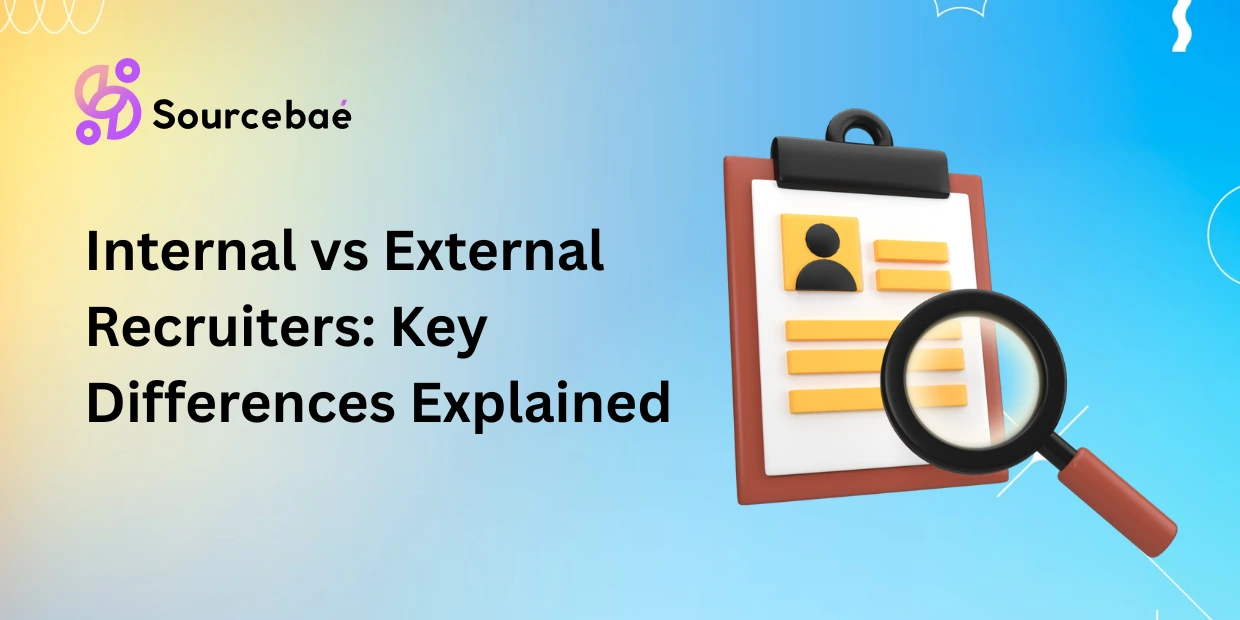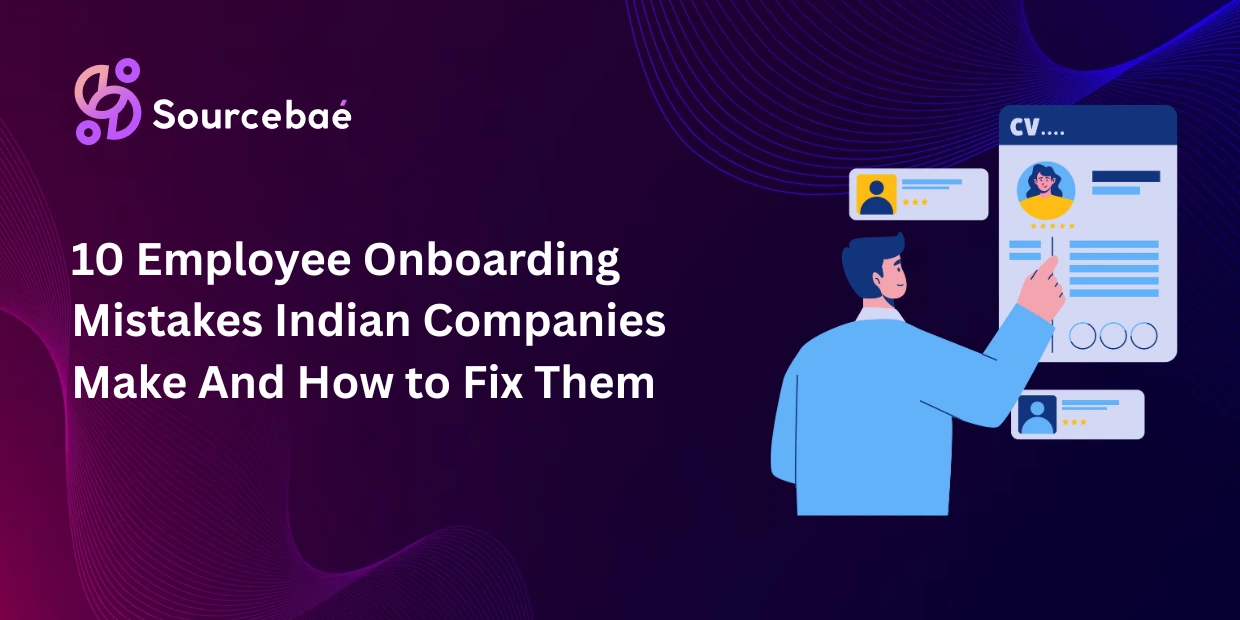Recruiting the right talent often requires choosing between internal versus external hiring strategies. Internal recruitment fills roles with current employees, while external recruitment looks beyond the organization for new candidates. Each approach has advantages and trade-offs depending on company needs. For example, a small start-up may first consider internal promotions, while a fast-growing tech firm might recruit externally to find specialized expertise.
Difference Between Internal and External Recruitment
Both internal and external recruitment involve similar steps (posting jobs, screening, interviewing) but target different candidate pools. Internal recruiting directs these efforts toward current employees, whereas external recruiting focuses on attracting people outside the company. In practice, companies weigh factors like budget, timing, and skill needs when deciding which approach to use.
What is Internal Recruitment?
Internal recruitment means filling job vacancies with people who already work at the company. For example, a promotion or a transfer is a form of internal hiring. As Paychex explains, internal recruitment is “the process of filling roles with current employees rather than recruiting outside”. This strategy leverages existing talent and often involves open internal job postings, employee referrals, promotions, and transfers.
Advantages of Internal Recruitment
- Cost-effective: Avoids most external hiring costs such as advertising and agency fees. For instance, companies save money and time by not needing extensive searches for outside candidates.
- Faster onboarding: Current employees already know the company’s culture and processes, so they can hit the ground running. This means less training time and a quicker path to full productivity.
- Employee motivation and retention: Promoting from within shows you value and reward your team, boosting morale and loyalty. Knowing that career growth is possible internally encourages staff to stay and develop their careers at the company.
- Better cultural fit: Internal candidates understand the organization’s values and environment. This familiarity reduces cultural mismatches and helps them succeed in their new roles.
Disadvantages of Internal Recruitment
- Limited talent pool: Relying only on internal candidates means missing out on the wider range of skills and fresh ideas available externally. Some roles may require expertise not found within the current staff.
- Creates new vacancies: Promoting or transferring an employee leaves another position open that must be filled. This can lead to a cycle of internal moves and may ultimately require external hiring for the newly opened role.
- Risk of stagnation: Continuously hiring from within can make the organization insular. Without new people, creativity and innovation may suffer.
- Possible resentment: If promotions or internal hires aren’t managed transparently, other employees might feel overlooked or suspect favoritism. Fair processes and clear communication are needed to mitigate jealousy or frustration.
What is External Recruitment?
External recruitment means filling a job vacancy with a person from outside the company. This approach brings in candidates with varied backgrounds and experience. As Indeed explains, external recruiting “occurs when you look for candidates outside your current workforce,” often using methods like job boards, agencies, or referrals. External hires typically offer fresh skills, up-to-date industry knowledge, and diverse perspectives.
Advantages of External Recruitment
- Access to a larger talent pool: There are far more candidates outside the company than inside. External recruiting lets you search a broader market to find the best match, including candidates with specialized skills.
- Fresh perspectives and innovation: New hires may challenge the status quo and contribute innovative ideas. An outsider’s point of view can “breathe new life” into a team and spark creative solutions.
- Up-to-date skills and knowledge: External candidates often bring recent experience and training in the latest tools and practices. They can introduce best practices and insights from other organizations.
- Greater diversity: Hiring from outside tends to increase diversity in experience and thought. A more diverse workforce can improve problem-solving and help companies better serve varied customer needs.
Disadvantages of External Recruitment
- Longer onboarding: Outside hires have to learn your company’s systems, culture, and team dynamics. It generally takes more time and training for them to reach full productivity.
- Higher turnover risk: Many new hires, especially at entry levels, quit within their first months. For example, a survey found about 31% of new employees leave within 6 months, often citing mismatched job expectations.
- More expensive and time-consuming: External hiring usually involves significant costs and effort – advertising, recruiting fees, training, and possibly relocation. Indeed warns of “higher cost and more work,” since you must advertise widely and spend more time vetting candidates.
- Potential hiring delays: An external candidate often must give notice to their current employer, which can add weeks to the hiring timeline. In some industries, notice periods are very long.
Key Differences between Internal and External Recruitment
Candidate Pool
External recruitment casts a much wider net. As WeWork notes, there are simply “many more” external candidates, giving recruiters a much larger talent pool to choose from. By contrast, internal recruitment is confined to current employees. This smaller pool can accelerate hiring, but it might mean overlooking highly qualified outsiders.
Familiarity with the Organization
Internal hires already know the company’s culture, policies, and workflow. They typically “have a proven track record” within the company and require little onboarding. External hires, on the other hand, are new to the organization and need time to learn how things work. This means initial productivity can be slower as they settle in.
Skill Sets and Fresh Perspectives
External hiring tends to introduce new skills and viewpoints. According to WeWork, external recruits often bring a “diversity of insight and knowledge” and up-to-date industry practices. For example, a tech company might hire an external developer who knows the latest programming frameworks. Internal candidates already align with the company’s way of doing things, which helps continuity but can limit fresh ideas. Without outside hires, a company risks relying on existing methods and missing out on new ideas.
Cost and Time Considerations
Internal recruitment generally saves time and money. Since you’re hiring someone already in-house, there are minimal additional costs and less time spent on screening and training. Paychex notes that internal hiring can reduce costs and time-to-hire because the candidate’s qualifications and fit are already known. External recruitment, by contrast, demands more investment. It requires paying for job ads or agencies and spending more time on the .
Conclusion
Internal and external recruiting each serve important purposes. Internal hiring promotes employee growth, loyalty and cost savings, while external hiring brings in fresh talent, skills and ideas. The best strategy depends on the role and the company’s goals. Many employers use a mix of both approaches. For example, companies like Google and Deloitte combine strong internal promotion programs with targeted external hires to build robust, diverse teams. Ultimately, combining both strategies leads to the strongest teams.
FAQs on Difference Between Internal and External Recruitment
What does internal recruitment mean?
Internal recruitment means filling a position with an existing employee rather than hiring someone new. It often involves promotions, transfers, or internal job postings.
What does external recruitment mean?
External recruitment means seeking candidates outside the organization to fill a vacancy. Methods include job boards, recruitment agencies, employee referrals, and social media.
What are the advantages of internal recruitment?
Hiring internally can be faster and cheaper. Internal candidates already fit the company culture and require less onboarding. It also boosts morale by rewarding current employees and can improve retention.
What are the advantages of external recruitment?
External recruitment provides access to a larger talent pool and new skill sets. It brings fresh perspectives and up-to-date expertise into the organization.
What are examples of internal sources of recruitment?
Common internal sources include promotions, transfers, and employee referral programs. For example, promoting a current staff member to a higher role or filling a vacancy via an internal job posting are internal methods.
What are examples of external sources of recruitment?
Examples include online job boards (like Indeed, LinkedIn), recruitment agencies or headhunters, campus job fairs, and networking events. These channels target candidates outside the company’s workforce.
What is the key difference between internal and external hiring?
The key difference is the candidate pool: internal hiring limits candidates to current employees, while external hiring opens the search to anyone outside the company. Internal hiring is usually quicker and cheaper, whereas external hiring brings in new talent and perspectives.
Which is better, internal or external recruitment?
Neither approach is universally better. Internal recruitment saves time and promotes loyalty, while external recruitment brings new skills and innovation. The optimal choice depends on the specific job requirements and organizational needs.
Want to optimize your hiring? Whether you need to fill a role from within or cast a wider net externally, focusing on a balanced strategy is key. For guidance tailored to your organization, consider consulting with our recruitment experts today.






